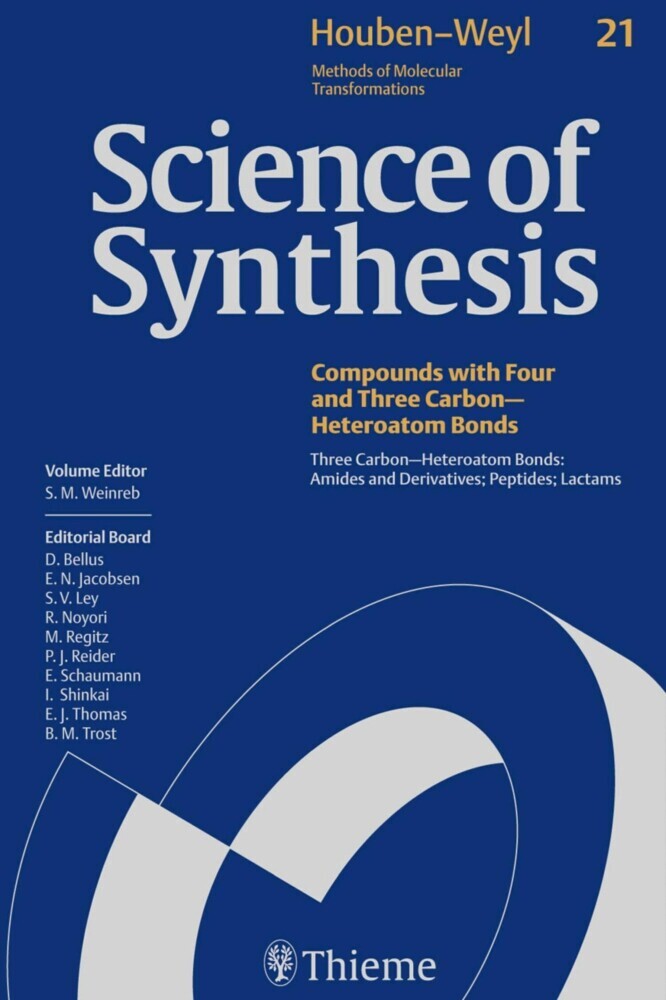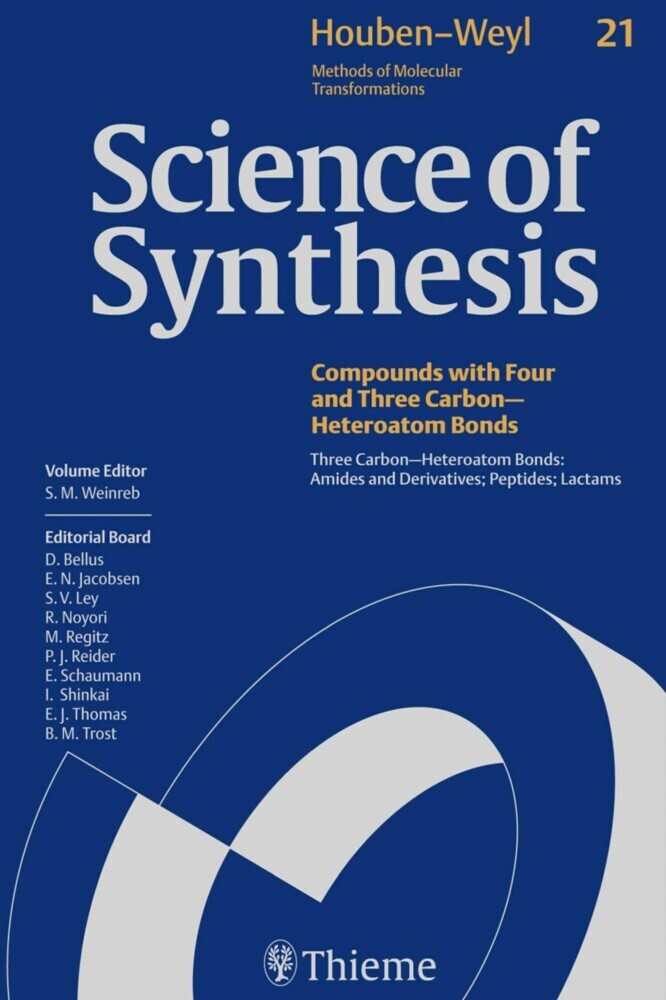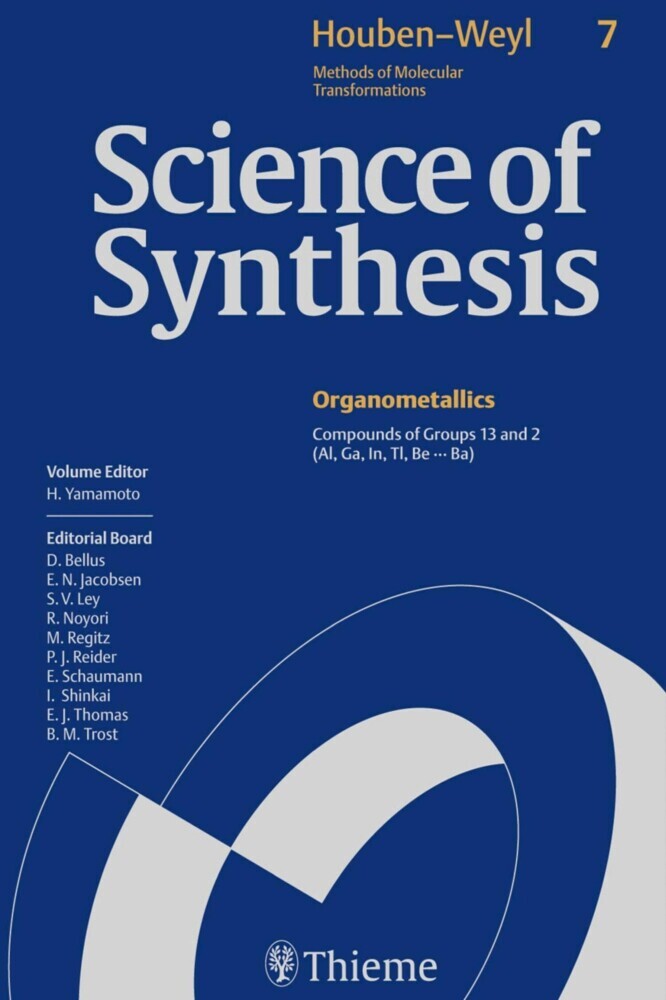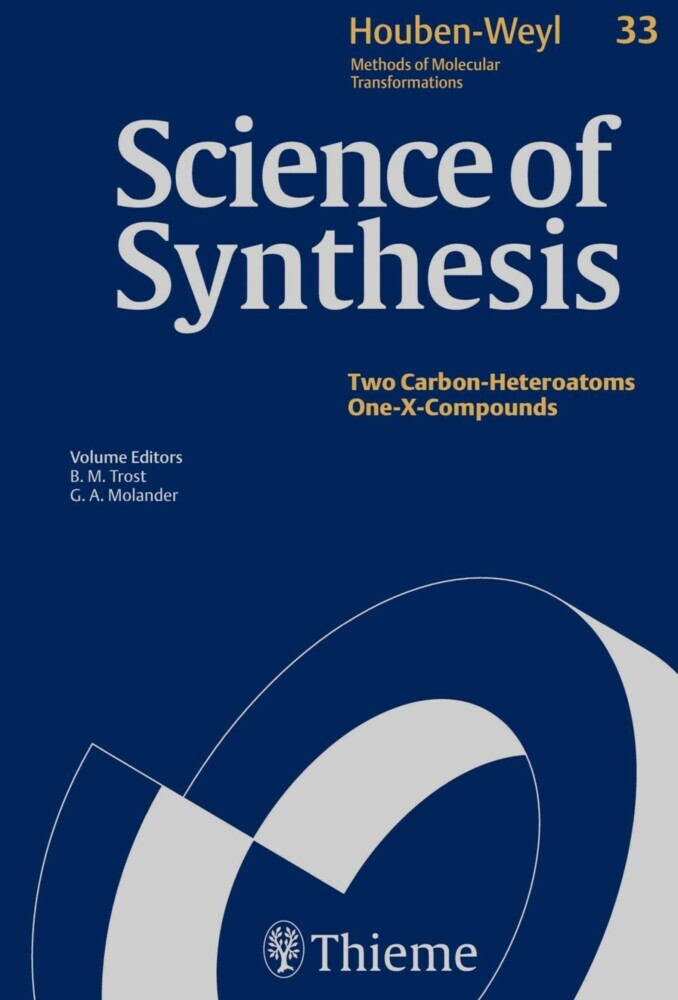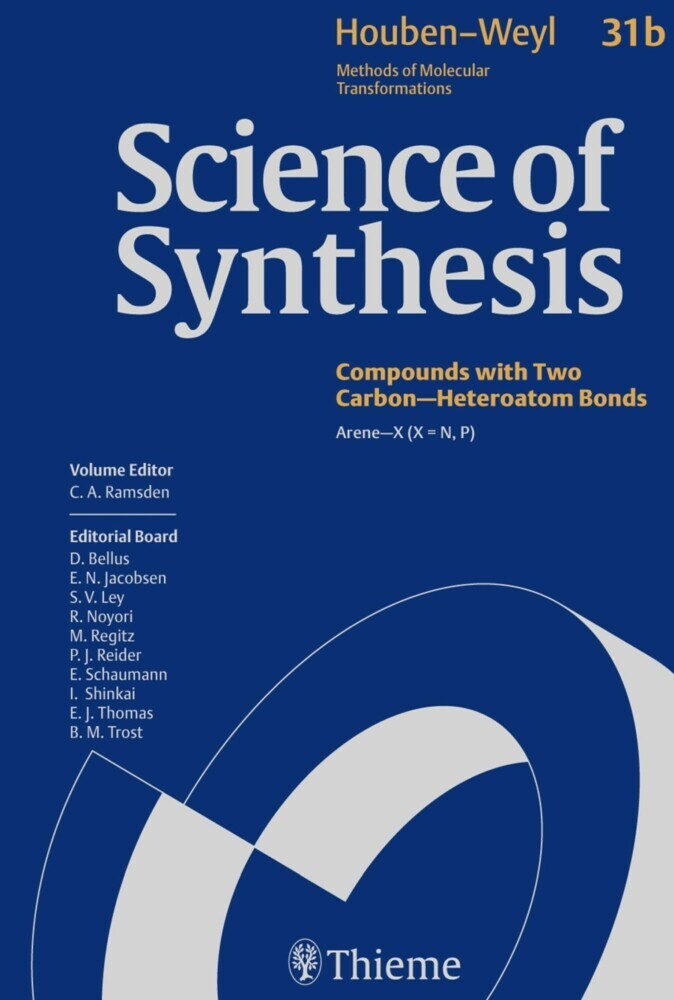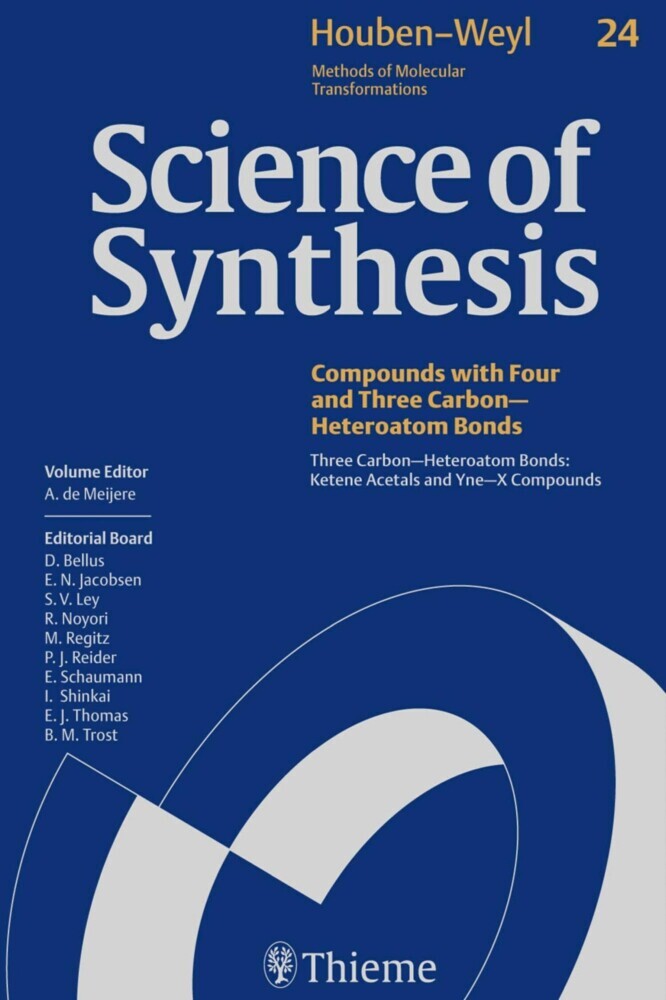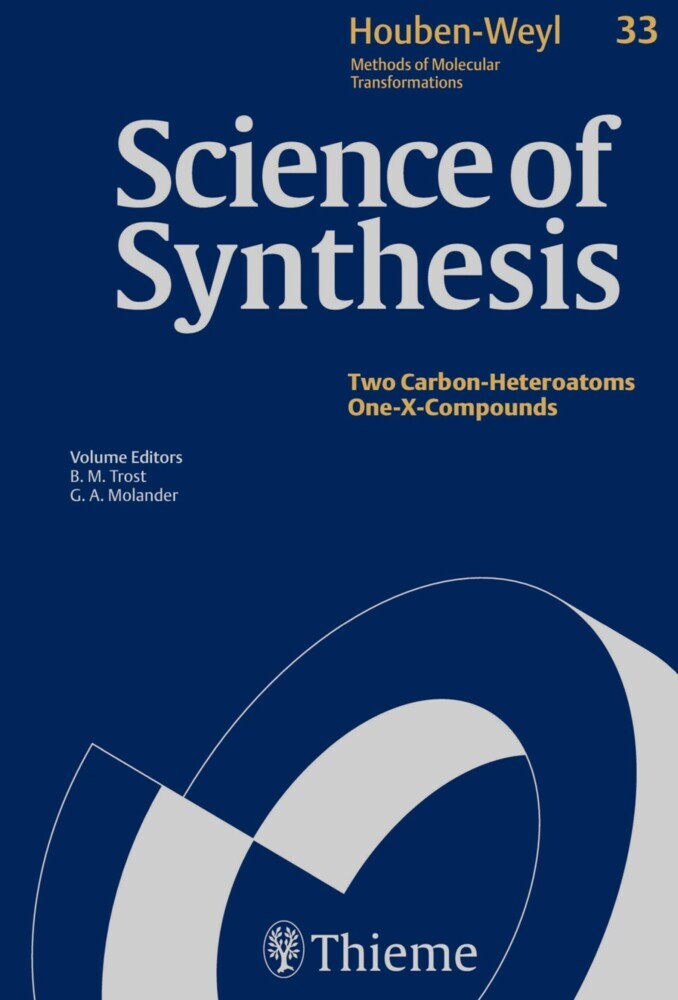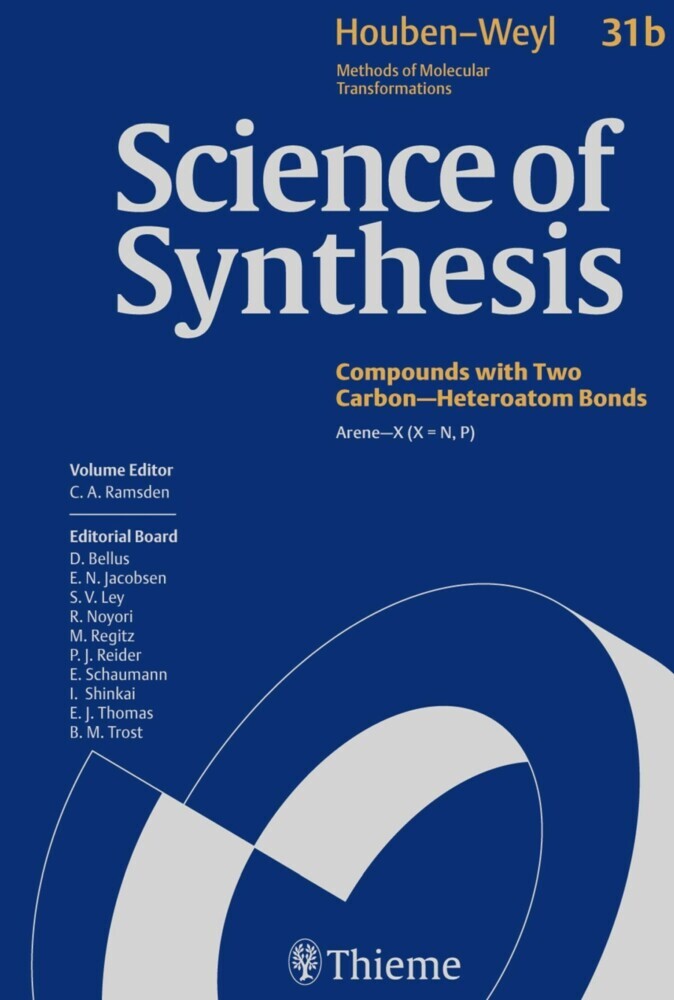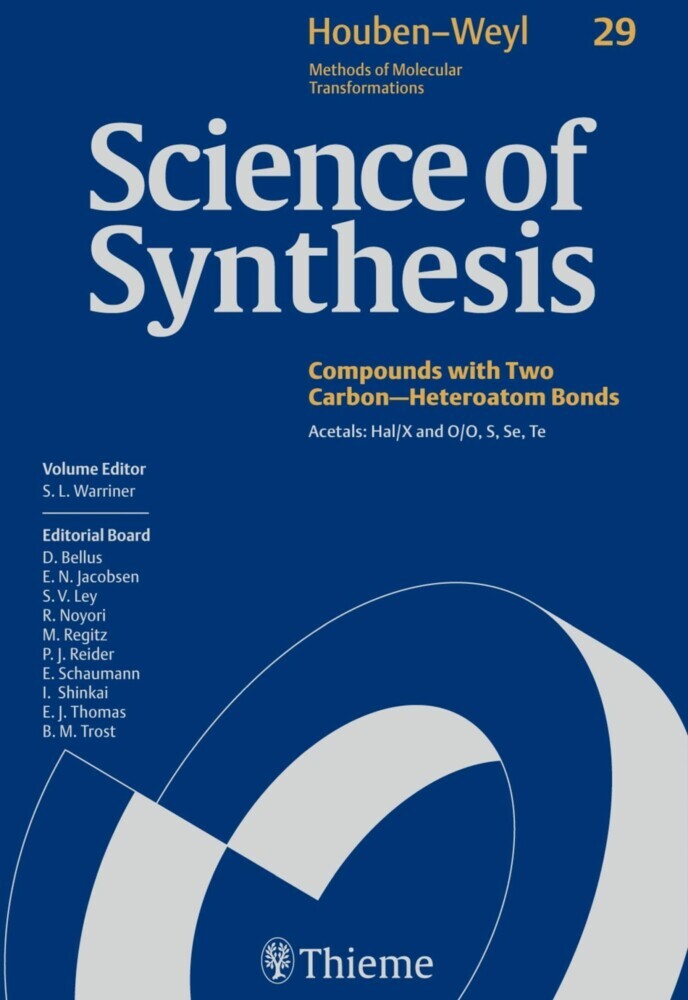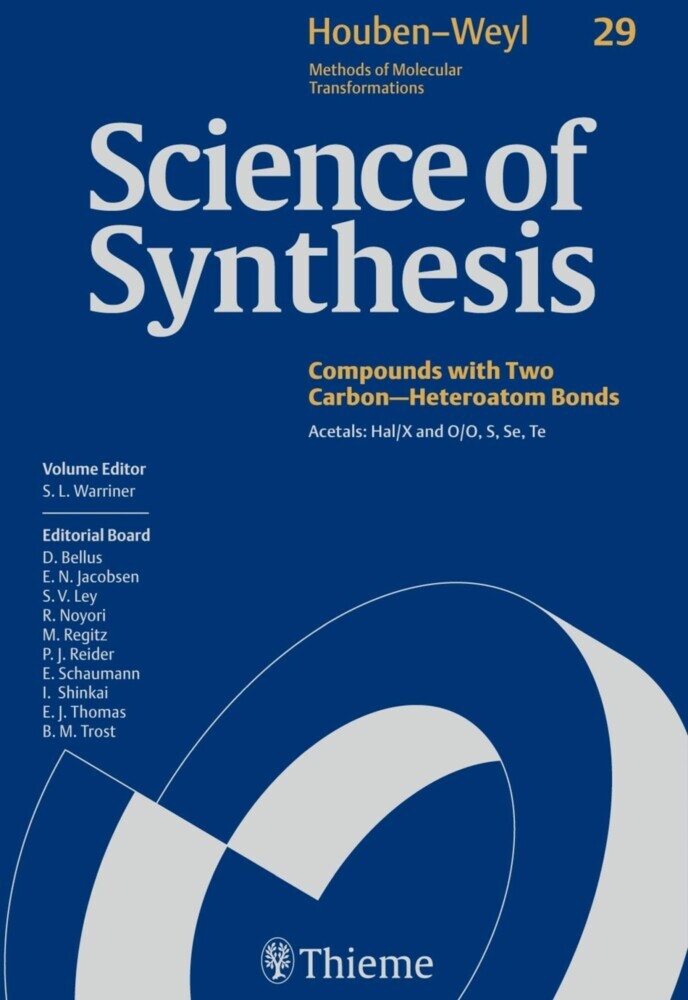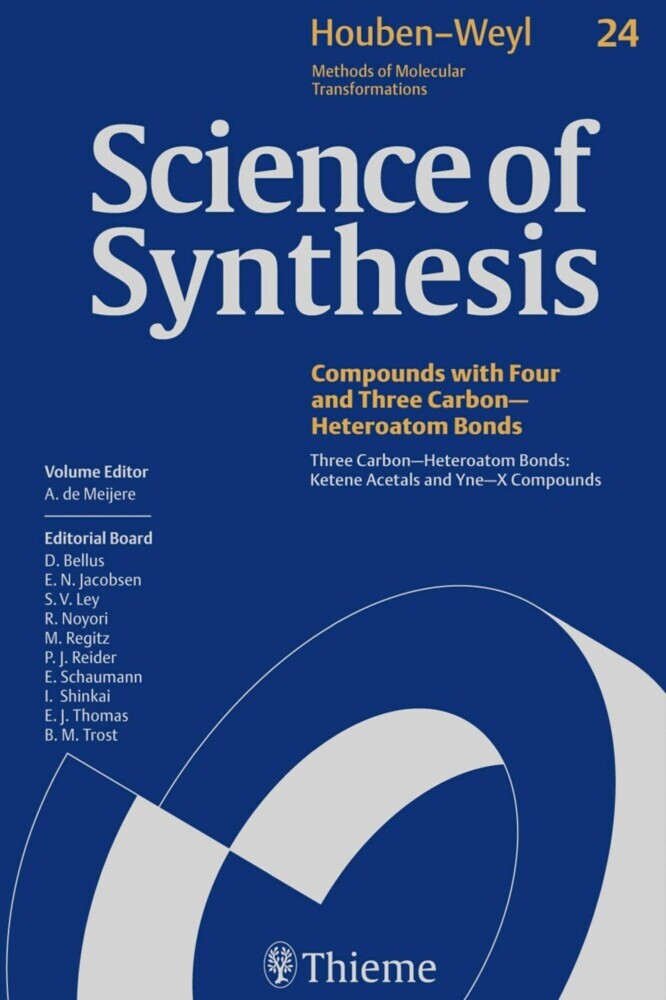Science of Synthesis: Houben-Weyl Methods of Molecular Transformations Vol. 21. Vol.21
Three Carbon-Heteroatom Bonds: Amides and Derivatives; Peptides; Lactams
Science of Synthesis: Houben-Weyl Methods of Molecular Transformations Vol. 21. Vol.21
Three Carbon-Heteroatom Bonds: Amides and Derivatives; Peptides; Lactams
Science of Synthesis: Houben-Weyl Methods of Molecular Transformations is the entirely new edition of the acclaimed reference series Houben-Weyl, the standard synthetic chemistry resource since 1909. This new edition is published in English and will comprise 48 volumes published between the years 2000 and 2008.
Science of Synthesis is a quality reference work developed by a highly esteemed editorial board to provide a comprehensive and critical selection of reliable organic and organometallic synthetic methods. This unique resource is designed to be the first point of reference when searching for a synthesis strategy.
- Contains the expertise of presently 400 leading chemists worldwide
- Critically evaluates the preparative applicability and significance of the synthetic methods
- Discusses relevant background information and provides detailed experimental procedures
For full information on the Science of Synthesis series, visit the Science of Synthesis Homepage
1;Volume 21: Three Carbon--Heteroatom Bonds: Amides and Derivatives; Peptides; Lactams;1 1.1;Title page;3 1.2;Imprint;5 1.3;Preface;6 1.4;Volume Editor's Preface;7 1.5;Overview;8 1.6;Table of Contents;10 1.7;21 Introduction;38 1.7.1;21.1 Product Class 1: Amides;54 1.7.1.1;21.1.1 Synthesis from Carbonic Acid Derivatives;64 1.7.1.1.1;21.1.1.1 Method 1: Synthesis from Carbon Dioxide and Compounds Related to Carbonic Acid;64 1.7.1.1.1.1;21.1.1.1.1 Variation 1: From Carbon Dioxide;64 1.7.1.1.1.2;21.1.1.1.2 Variation 2: From Carbon Tetrachloride;65 1.7.1.1.1.3;21.1.1.1.3 Variation 3: From Phosgene, Phosgene Surrogates, and Chloroformates;65 1.7.1.1.1.4;21.1.1.1.4 Variation 4: From Carbonates;66 1.7.1.1.2;21.1.1.2 Method 2: Synthesis from Carbamic Acids and Related Derivatives;67 1.7.1.1.2.1;21.1.1.2.1 Variation 1: From O-Alkyl or O-Aryl Carbamates;67 1.7.1.1.2.2;21.1.1.2.2 Variation 2: From Carbamoyl Halides and Related Derivatives;68 1.7.1.1.2.3;21.1.1.2.3 Variation 3: From Cyanic Acid and Cyanic Acid Salts;69 1.7.1.1.2.4;21.1.1.2.4 Variation 4: From Isocyanates;69 1.7.1.1.3;21.1.1.3 Method 3: Synthesis from Ureas and Related Derivatives;70 1.7.1.1.3.1;21.1.1.3.1 Variation 1: From Diverse N-Substituted Ureas;70 1.7.1.1.3.2;21.1.1.3.2 Variation 2: From Diimides and Cyanamides;72 1.7.1.1.3.3;21.1.1.3.3 Variation 3: From O-Alkylated Ureas;72 1.7.1.1.4;21.1.1.4 Method 4: Synthesis from Sulfur-Containing Compounds;74 1.7.1.1.4.1;21.1.1.4.1 Variation 1: Reduction of the C--S Bond;74 1.7.1.1.4.2;21.1.1.4.2 Variation 2: C--C Bond Formation;75 1.7.1.2;21.1.2 Synthesis from Carboxylic Acids and Derivatives;80 1.7.1.2.1;21.1.2.1 Method 1: Aminolysis of Acylboranes;80 1.7.1.2.2;21.1.2.2 Method 2: Synthesis from Acid Halides;80 1.7.1.2.2.1;21.1.2.2.1 Variation 1: By Condensation with Amines and Alkyl(trialkylsilyl)amines;80 1.7.1.2.2.2;21.1.2.2.2 Variation 2: By Indium Catalysis;81 1.7.1.2.3;21.1.2.3 Method 3: Synthesis from Carboxylic Acids;81 1.7.1.2.3.1;21.1.2.3.1 Variation 1: By Direct Condensation with Amines;81 1.7.1.2.3.2;21.1.2.3.2 Variation 2: By Condensation with Borane or Borohydrides;82 1.7.1.2.3.3;21.1.2.3.3 Variation 3: By Condensation with Carbodiimides;83 1.7.1.2.3.4;21.1.2.3.4 Variation 4: By Other Dehydrating Agents;83 1.7.1.2.3.5;21.1.2.3.5 Variation 5: By Redox Condensation;83 1.7.1.2.4;21.1.2.4 Method 4: Synthesis from Acid Anhydrides;84 1.7.1.2.4.1;21.1.2.4.1 Variation 1: By Condensation with Isocyanates;84 1.7.1.2.4.2;21.1.2.4.2 Variation 2: By Condensation with Amines;85 1.7.1.2.5;21.1.2.5 Method 5: Synthesis from Esters;86 1.7.1.2.5.1;21.1.2.5.1 Variation 1: By Aminolysis with Amines or Metal Amides;86 1.7.1.2.5.2;21.1.2.5.2 Variation 2: Via Intermediate Acyl Cyanides;87 1.7.1.2.5.3;21.1.2.5.3 Variation 3: By Electrolysis;88 1.7.1.2.5.4;21.1.2.5.4 Variation 4: By Enzyme Catalysis;88 1.7.1.2.6;21.1.2.6 Method 6: Synthesis from Thiocarboxylic Acids or Carbothioate Esters;88 1.7.1.2.6.1;21.1.2.6.1 Variation 1: From Thiocarboxylic Acids;89 1.7.1.2.6.2;21.1.2.6.2 Variation 2: From Carbothioate Esters and Amines;92 1.7.1.2.6.3;21.1.2.6.3 Variation 3: From S-Benzothiazol-2-yl Carbothioates;93 1.7.1.2.6.4;21.1.2.6.4 Variation 4: From Carbothioate Esters by Reaction with Alkyl Azides;93 1.7.1.2.7;21.1.2.7 Method 7: Synthesis from Acyl Azides;94 1.7.1.2.7.1;21.1.2.7.1 Variation 1: By Reduction;94 1.7.1.2.7.2;21.1.2.7.2 Variation 2: By Substitution with Amines;95 1.7.1.2.8;21.1.2.8 Method 8: Synthesis from Imidates and Related Compounds;95 1.7.1.2.8.1;21.1.2.8.1 Variation 1: By Rearrangement;95 1.7.1.2.8.2;21.1.2.8.2 Variation 2: From 4,5-Dihydrooxazoles by Ring Opening;95 1.7.1.2.9;21.1.2.9 Method 9: Synthesis from Nitriles by Functional Group Transformation;95 1.7.1.2.9.1;21.1.2.9.1 Variation 1: By Hydrolysis;95 1.7.1.2.9.2;21.1.2.9.2 Variation 2: N-Alkylation by Ritter-Type Reactions;98 1.7.1.2.10;21.1.2.10 Method 10: Synthesis from Isocyanides;103 1.7.1.2.10.1;21.1.2.10.1
Bailey, Thomas
Weinreb, Steven M.
| ISBN | 9783131719515 |
|---|---|
| Artikelnummer | 9783131719515 |
| Medientyp | E-Book - PDF |
| Copyrightjahr | 2014 |
| Verlag | Georg Thieme Verlag KG |
| Umfang | 1076 Seiten |
| Sprache | Englisch |
| Kopierschutz | Digitales Wasserzeichen |

